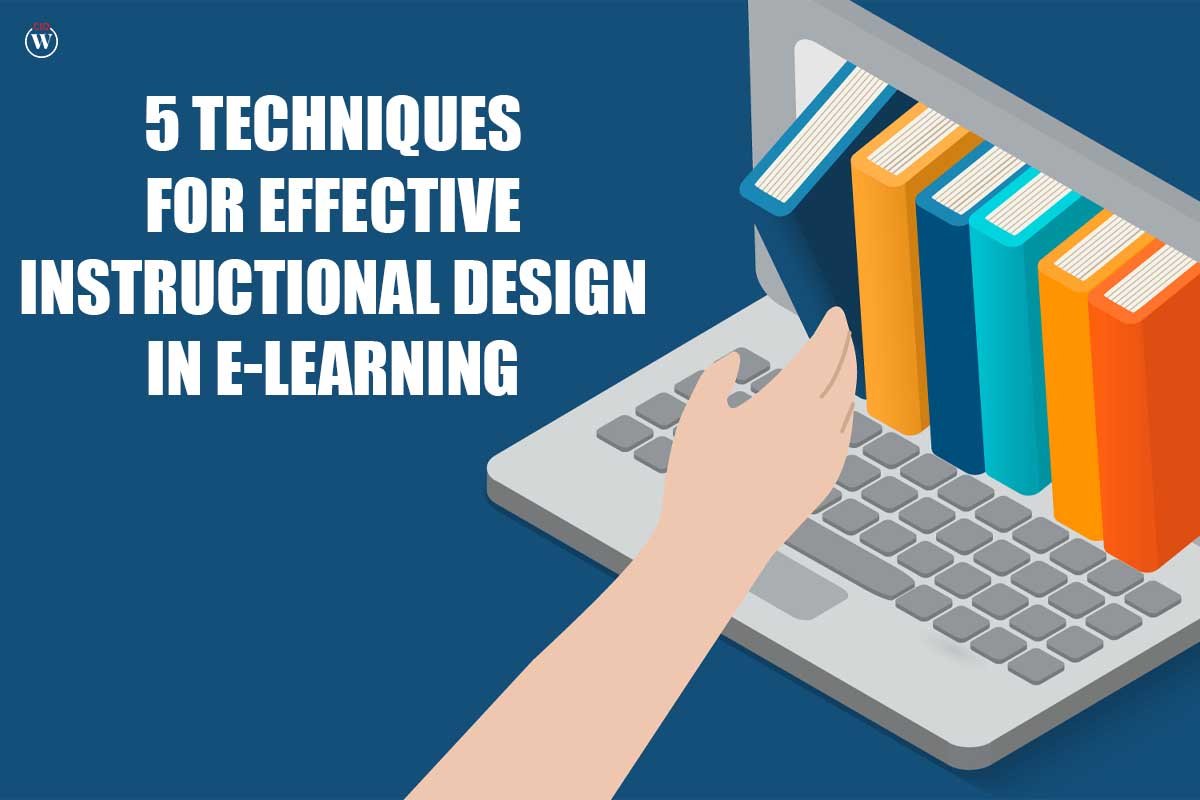One of the most essential issues in corporate training will continue to be Effective Instructional Design. As more businesses adopt or grow their eLearning programs, it is critical that they evaluate not just the content but also how it will be delivered.
Successful & Effective Instructional Design prioritizes the student and focuses on providing high-quality, individualized, intuitive, enjoyable, and creative experiences that are based on their requirements.
Here are 5 Techniques for Effective Instructional Design in e-learning;
1. MicroLearning
MicroLearning is a learning approach that consists of short, concentrated segments of learning, each intended to achieve a particular learning objective. To put it another way, Effective Instructional Design learning is “chunked” to keep the learner’s cognitive load manageable while also improving their capacity to acquire, remember, and retain.
MicroLearning also has the benefit of being conveniently available through mobile devices, enabling learners to discover and apply the knowledge they need immediately when they need it.
Why: If you are having difficulty keeping your learners interested, it may be time to adopt microlearning. It is frequently difficult to compete with distractions in the current world, making this an excellent alternative for Effective Instructional Designers who are having difficulty keeping their learners’ attention.
Micolearning’s fast style enables learners to take brief breaks throughout the day rather than disrupting it for large periods of time. They can concentrate on anything for 5-15 minutes before moving on to more vital concerns. It is more feasible to ask your staff to complete a bite-size 10-minute session every week rather than a 3-hour course. Read more about how to convert long-form eLearning into short microlearning.
How: Each “chunk” should last no more than 5-7 minutes and include ONE essential takeaway. You might employ interactive videos, augmented reality, infographics, checklists, job aids, and so on. This method should be used as a complement to official training. It may, for example, be used after a conference or workshop to follow up on what was covered at the professional development event. In this situation, it should be utilized as a reflection or a link to the workplace to stimulate action change based on principles acquired.
2. Assess and Analyze Learning Effectiveness
Strategy: Effective Instructional Design is more than just creating something and then forgetting about it. Data may help Effective Instructional Designers assess and evaluate how effectively learners are reacting to the course, allowing them to constantly enhance the learning experience.
Why: Tracking student progress and collecting feedback is the greatest approach to determine the effect of your course. Understanding how well the student learned, whether or not he or she is motivated to change behavior and apply what they learned at work, and whether or not they were engaged or bored throughout the course are all important factors to evaluate, analyze, and measure in order to continuously improve the learning experience. Assessments, observations of learners’ behavior, questionnaires, and data from your platform may all be used to measure learning efficacy.
How: There are several methods for continually optimizing your courses for Effective Instructional Design, for example:
Data collection. You may start measuring how much time learners spend in a course, where they get stuck, and what they love, in addition to completion rates. Just get hooked with data and begin studying student behavior to gain an understanding of how employees are utilizing your courses, and then improve appropriately!
Requesting input from students. Interacting directly with your students and learning their views and opinions is another great technique to gain additional feedback on your course. You may, for example, utilize surveys to ask questions about the platform’s navigation, the usefulness of the resources, and their favorite/least favorite aspects of the entire learning experience.
When you use a learning platform like SHIFT, you have access to real-time data that allows you to see how learners are doing and utilizing your courses. You may wish to keep an eye on the following metrics:
Enrollment of users
User participation
Per-user progress
Users who are engaged and return
Number of visits per user
3. Curation of Content
Strategy: According to Bersin by Deloitte, content curation is both an art and a science. It is concerned with locating the most relevant information for a certain set of target audiences, contextualizing and structuring it before delivering it to them.
To meet each learner’s needs and provide personalized learning experiences, you can gather content from multiple sources, organize it on different learning paths so each learner can consume it as needed, and, most importantly, contextualize it (enhancing the value of the content by adding your own comments, title, a brief explanatory note or an overview, more information, and/or tags).
Why: It is vital for Effective Instructional Designers to continue learning, developing, and inventing these days. Being nimble and paying attention to changing company demands are essential, and content curation may help supply relevant material rapidly. According to study, the typical employee spends roughly 9.5 hours each week simply looking for information. Curating material allows eager learners to have access to important knowledge that is worth their time and attention.
Curating material for eLearning is more than just collecting the finest stuff in one location, modifying a few lines, or adding a simple remark. Although you may not need to write much, what you do write must explain the significance of the topic and how it fits within the course. By taking this step, you will have progressed from just acquiring material to really contributing value. This is your own touch, something that distinguishes the material from generic information found online or elsewhere.
4. Distinctive Learning
Spaced learning is the process of repeating something learner’s over time rather than instantly. According to research, this method assists learners in refreshing their knowledge and strengthening their recollection of the subject.
How does it function? Provide learners with recaps of previously taught material at regular intervals (days, weeks, or months after the first learning event). The review sessions provide additional opportunity for learners to fill learning gaps.
You should also include frequent study/review breaks into your sessions. The typical is three eLearning sessions of five minutes each, with 10-minute intervals in between, however this may be changed based on the topic matter. For example, more difficult subjects that need longer sessions may also require a longer break for enhanced understanding. Timed breaks may be introduced in eLearning courses to require online learners to stop and do something different between sessions.
Typically, Effective Instructional Designers choose the best manner to deliver the same topic, but when using the spaced learning strategy, you must consider numerous perspectives.
Why: Experiments with spaced learning have shown that when learning is separated throughout time and repeated within the teaching session, individuals retain and remember more and forget less of what they have learned. In this situation, the forgetting curve has a smoother slope, and data from over 800 tests show that learning with spaced repetition enhances long-term retention by 200 percent.
When: A spaced approach may be a terrific follow-up to a single training session, but it can also be used to plan whole courses. This is useful if you don’t want to pull staff away from their employment for an extended period of time. It’s also ideal for busy learners who like to study in short spurts using mobile devices.
5. Personalization
Strategy: Customized eLearning is the process of tailoring a course to the individual requirements of each student.
Here’s how it’s typically done:
Enabling students to choose an avatar.
Allowing users to change themes, fonts, backgrounds, and so on.
Modification of the format of content distribution, such as the use of audio/video/text or the degree of engagement.
Using pre-assessment or surveys to personalize the learning route for each student.
Why: With a big firm, it is probable that all sorts of workers will be engaged in your eLearning course, therefore generic training will not be appropriate for addressing their diverse problems. Every employee wants to know how this new training will effect them and their career, and your course must be prepared to provide answers. Customized training for Effective Instructional Design will help each employee understand their job, the advantages they may anticipate, how their tasks and responsibilities may evolve, and the resources available to them.
Before the course even begins, identify gaps and filter learners. Put up a set of questions beforehand to determine learners’ requirements, gaps, experiences, and confidence levels, and then provide them with a course tailored to their specific needs. Build pre-made pages (which may include challenges, polls, movies, expert advice, and anything else you can think of) and then establish guidelines for what to display and when.
Give learners a task with professional coaching if they are very confident yet unskilled, for example. If they have any gaps or need particular expertise for their responsibilities, direct them to the appropriate sections.








